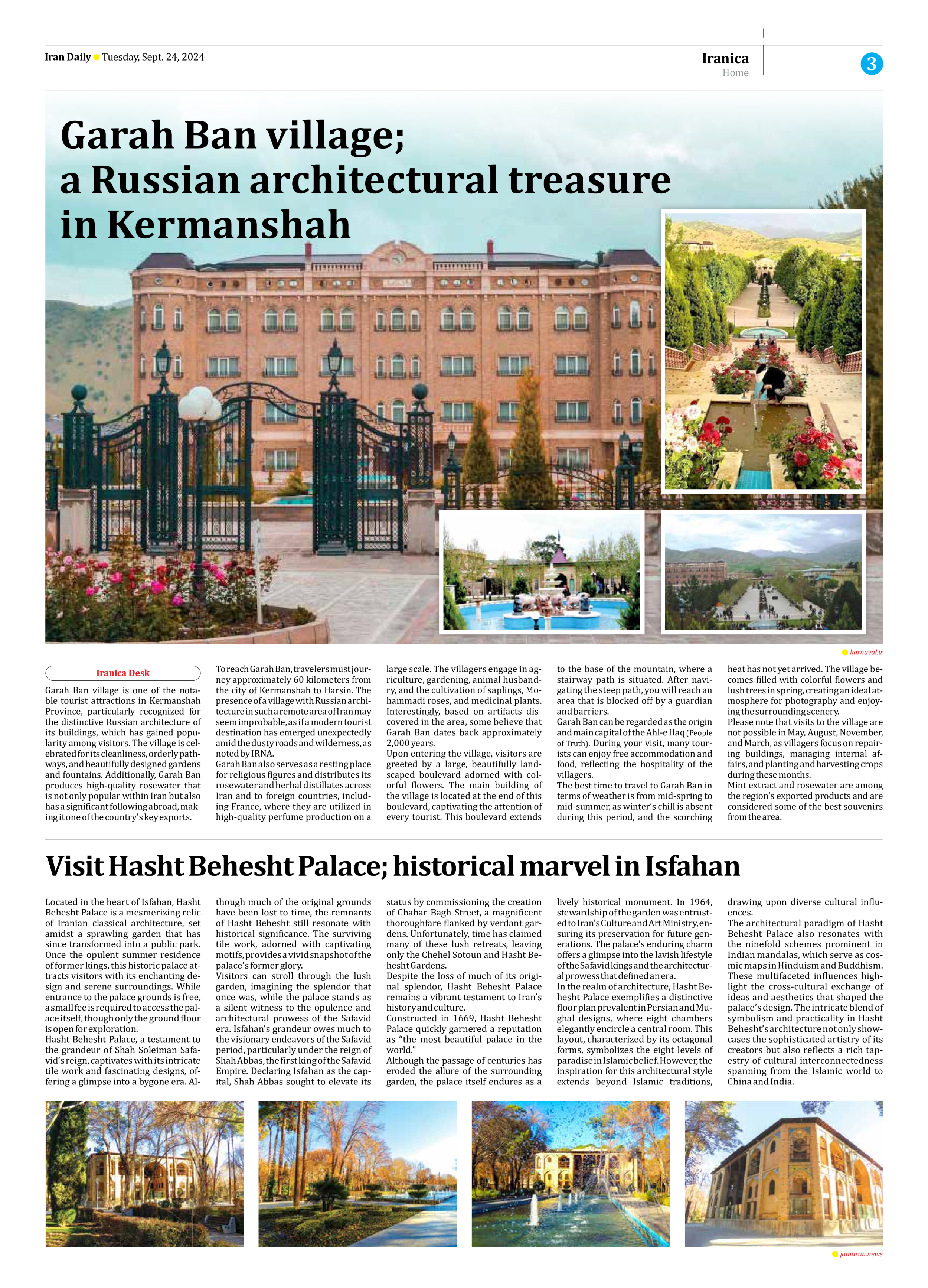
Garah Ban village; a Russian architectural treasure in Kermanshah
Garah Ban village is one of the notable tourist attractions in Kermanshah Province, particularly recognized for the distinctive Russian architecture of its buildings, which has gained popularity among visitors. The village is celebrated for its cleanliness, orderly pathways, and beautifully designed gardens and fountains. Additionally, Garah Ban produces high-quality rosewater that is not only popular within Iran but also has a significant following abroad, making it one of the country’s key exports.
To reach Garah Ban, travelers must journey approximately 60 kilometers from the city of Kermanshah to Harsin. The presence of a village with Russian architecture in such a remote area of Iran may seem improbable, as if a modern tourist destination has emerged unexpectedly amid the dusty roads and wilderness, as noted by IRNA.
Garah Ban also serves as a resting place for religious figures and distributes its rosewater and herbal distillates across Iran and to foreign countries, including France, where they are utilized in high-quality perfume production on a large scale. The villagers engage in agriculture, gardening, animal husbandry, and the cultivation of saplings, Mohammadi roses, and medicinal plants. Interestingly, based on artifacts discovered in the area, some believe that Garah Ban dates back approximately 2,000 years.
Upon entering the village, visitors are greeted by a large, beautifully landscaped boulevard adorned with colorful flowers. The main building of the village is located at the end of this boulevard, captivating the attention of every tourist. This boulevard extends to the base of the mountain, where a stairway path is situated. After navigating the steep path, you will reach an area that is blocked off by a guardian and barriers.
Garah Ban can be regarded as the origin and main capital of the Ahl-e Haq (People of Truth). During your visit, many tourists can enjoy free accommodation and food, reflecting the hospitality of the villagers.
The best time to travel to Garah Ban in terms of weather is from mid-spring to mid-summer, as winter’s chill is absent during this period, and the scorching heat has not yet arrived. The village becomes filled with colorful flowers and lush trees in spring, creating an ideal atmosphere for photography and enjoying the surrounding scenery.
Please note that visits to the village are not possible in May, August, November, and March, as villagers focus on repairing buildings, managing internal affairs, and planting and harvesting crops during these months.
Mint extract and rosewater are among the region’s exported products and are considered some of the best souvenirs from the area.







